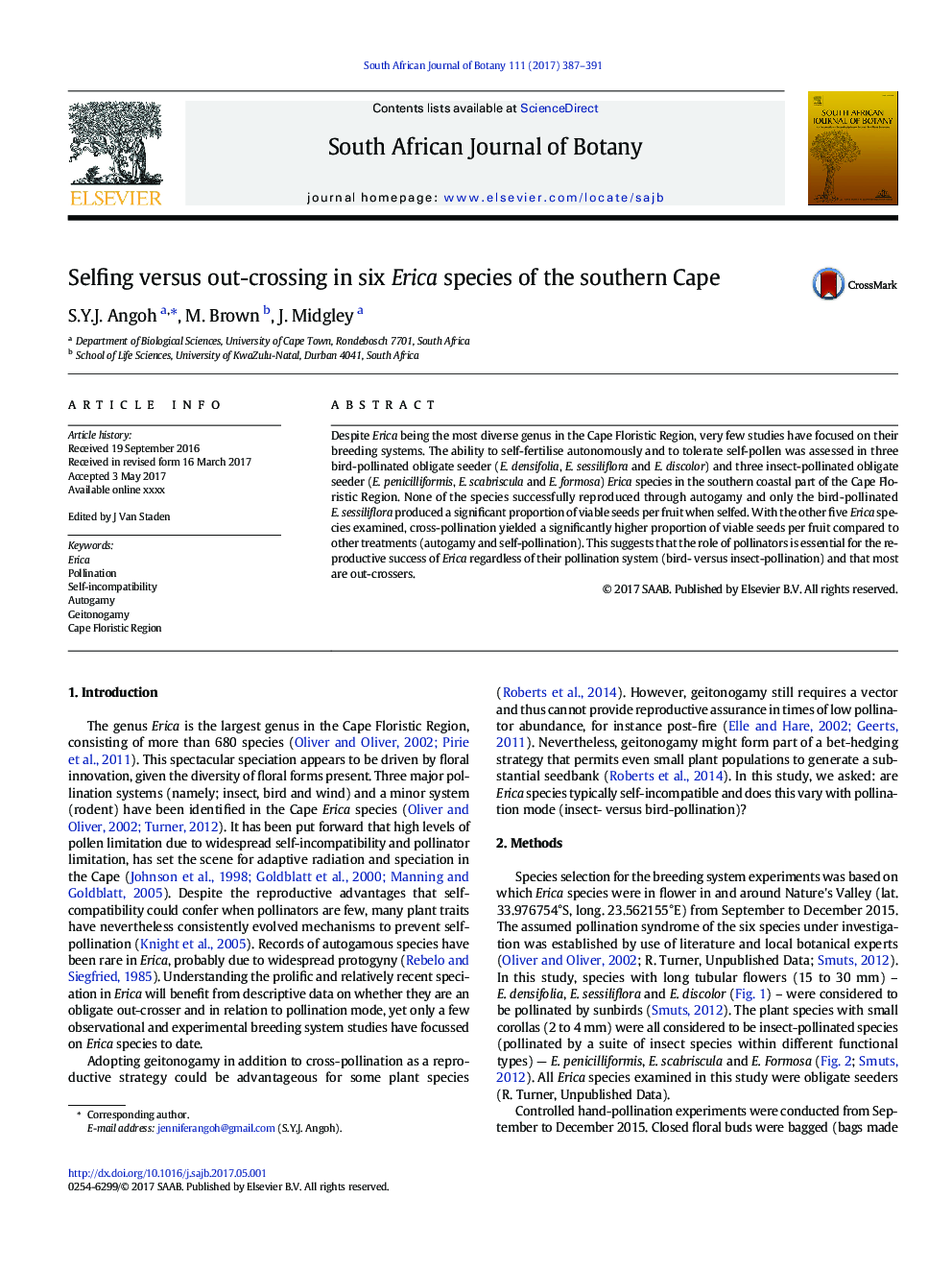| Article ID | Journal | Published Year | Pages | File Type |
|---|---|---|---|---|
| 5762983 | South African Journal of Botany | 2017 | 5 Pages |
Abstract
Despite Erica being the most diverse genus in the Cape Floristic Region, very few studies have focused on their breeding systems. The ability to self-fertilise autonomously and to tolerate self-pollen was assessed in three bird-pollinated obligate seeder (E. densifolia, E. sessiliflora and E. discolor) and three insect-pollinated obligate seeder (E. penicilliformis, E. scabriscula and E. formosa) Erica species in the southern coastal part of the Cape Floristic Region. None of the species successfully reproduced through autogamy and only the bird-pollinated E. sessiliflora produced a significant proportion of viable seeds per fruit when selfed. With the other five Erica species examined, cross-pollination yielded a significantly higher proportion of viable seeds per fruit compared to other treatments (autogamy and self-pollination). This suggests that the role of pollinators is essential for the reproductive success of Erica regardless of their pollination system (bird- versus insect-pollination) and that most are out-crossers.
Related Topics
Life Sciences
Agricultural and Biological Sciences
Agronomy and Crop Science
Authors
S.Y.J. Angoh, M. Brown, J. Midgley,
